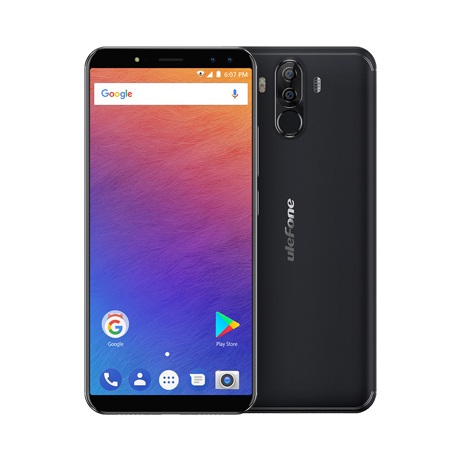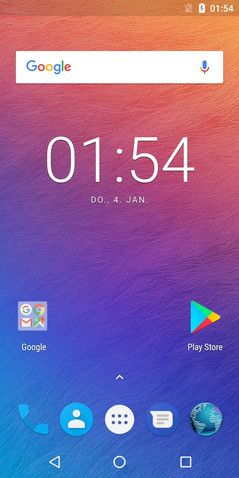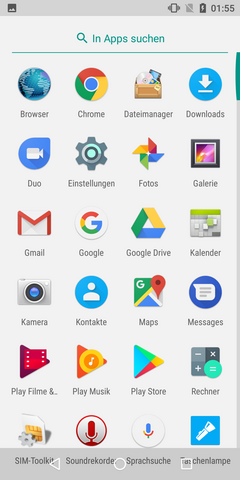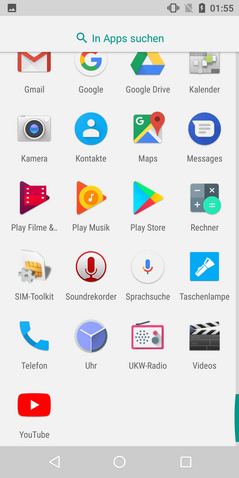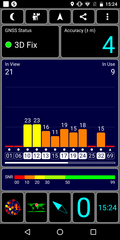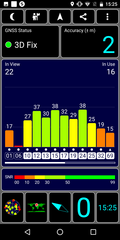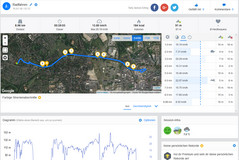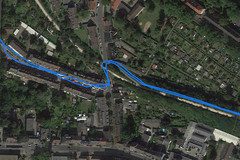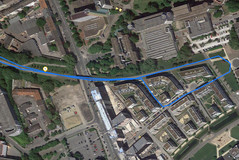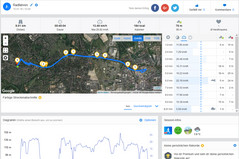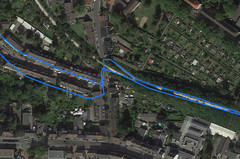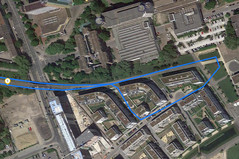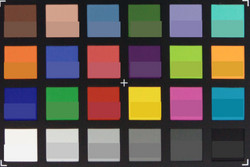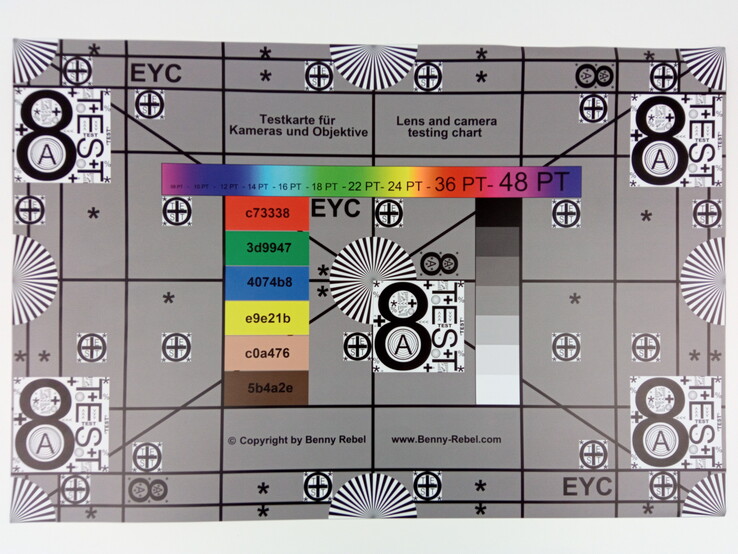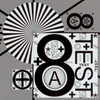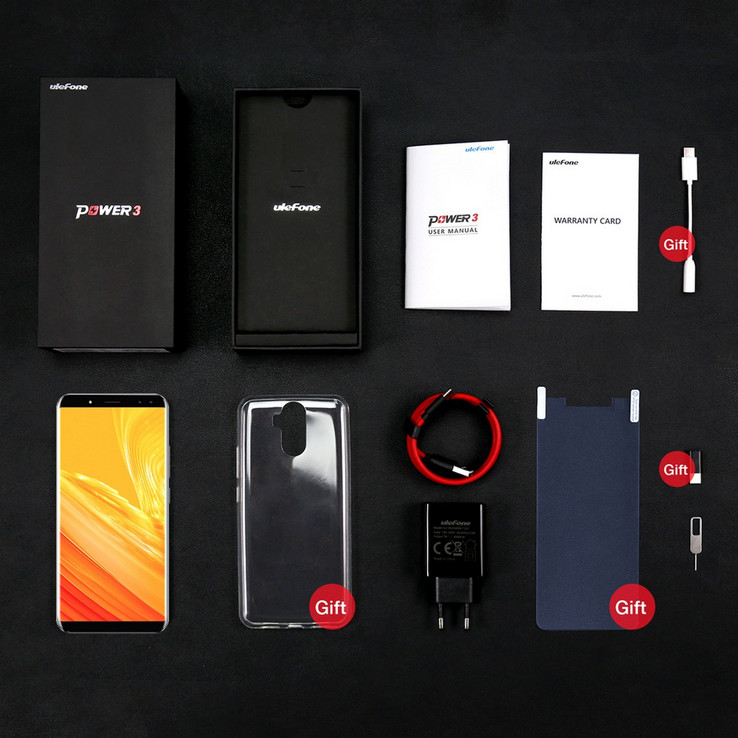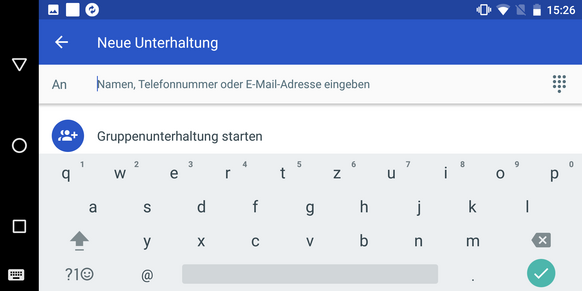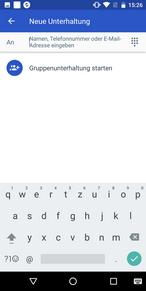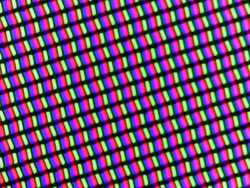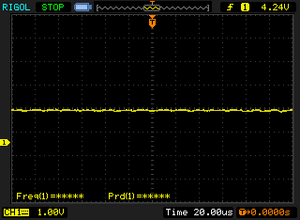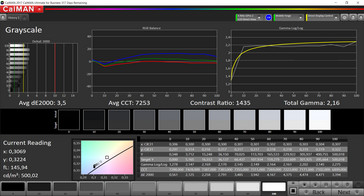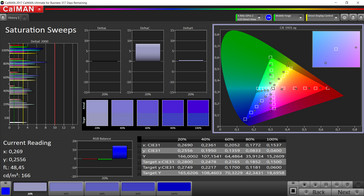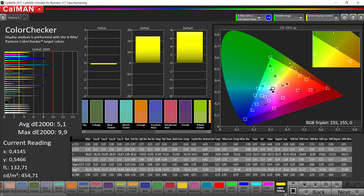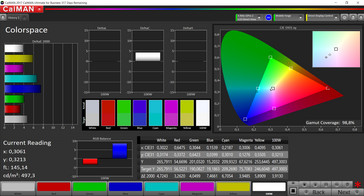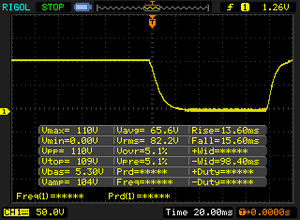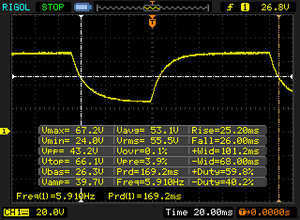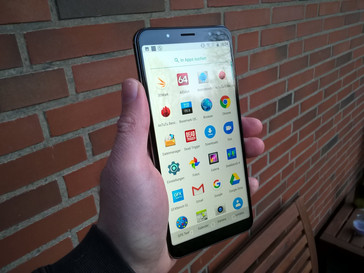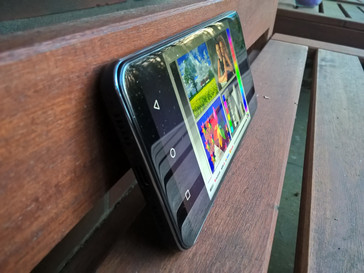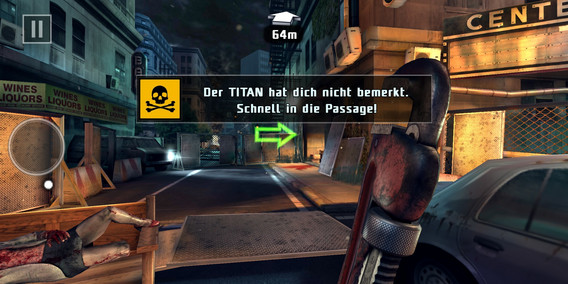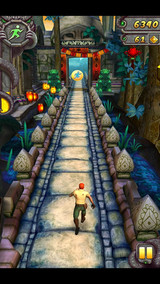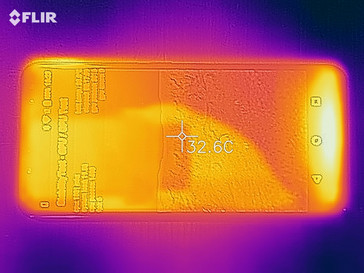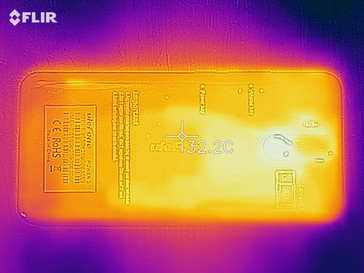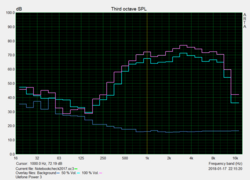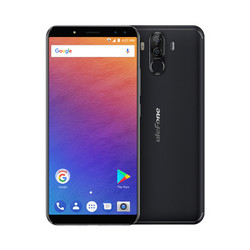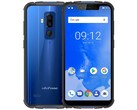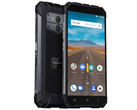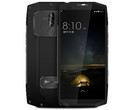Ulefone Power 3 Smartphone Review
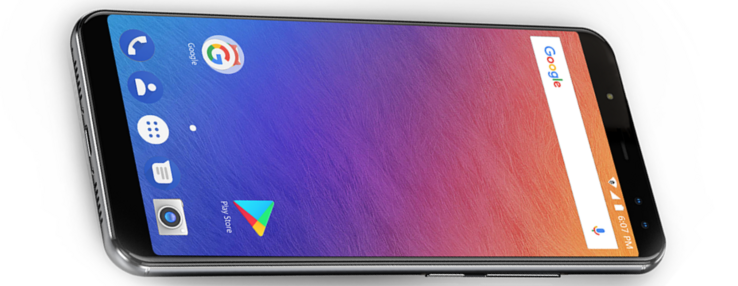
Ulefone has been active in the Chinese smartphone market since 2014, and some of its devices are also well-received in this part of the world. For example, we already liked the Ulefone Paris with its design and commendable performance in 2015, and reached a similar conclusion about the Ulefone Metal in 2016. However, both of these devices were struggling with a weak battery.
This should be different in our current test unit. A 6080 mAh battery promises sufficient endurance for several days, and with Mediatek's Helio P23-MT6763T SoC and the ARM Mali G71-MP2 GPU, sufficient performance should be ensured in this mid-range smartphone. The Ulefone Power 3 has to show how it fares against the competitors in our comparison against Oukitel's K10, the Blackview BV9000 Pro, the Maze Alpha X, and Doogee's Mix.
Case
The black plastic case of the Ulefone Power 3 is adorned with a silver design on the top and bottom edges which remains discreetly subdued. Although at a thickness of slightly less than 1 centimeter (~0.4 in), the phone is not particularly slim, it appears very slender despite its large battery. The 18:9 format also supports this impression. Despite having a 6-inch display, the width is comparable to that of a 5.5-inch smartphone.
Features
The hardware of our test unit includes Mediatek's Helio P23-MT6763T SoC with an integrated ARM Mali G71-MP2 GPU. In addition, 6 GB of RAM and 64 GB of flash storage ensure that the Ulefone Power 3 fulfills the demands of a mid-range phone. The smartphone offers only a single connection in the form of a USB Type-C port. Internally, this only supports the USB-2.0 standard. The internal storage can be expanded via MicroSD card up to 256 GB, and anyone who does not need the additional storage can use a second Nano-SIM card in the same slot of the Power 3 instead.
Software
Communication and GPS
The Ulefone Power 3 is able to connect via the usual mobile communication standards up to LTE. Something that cannot be taken for granted in smartphones from China is that the Power 3 also supports the LTE band 20, which mainly covers rural areas in Germany. Theoretically, you should be able to achieve download rates up to 150 MBit/s with this.
In addition to the mobile data connection, the Internet can also be accessed via WLAN. Here our test unit was able to achieve a good position in the middle of the field of the competing devices. While the Power 3 also supports WLAN networks in the 5 GHz band, it can only use the slower "a" and "n" standards. We can also attest the Power 3 with a good send and receive performance during everyday operation. Even larger distances or obstacles such as concrete walls are not interfering with the WLAN reception more than usual.
| Networking | |
| iperf3 transmit AX12 | |
| Doogee Mix | |
| Blackview BV9000 Pro | |
| Ulefone Power 3 | |
| Maze Alpha X | |
| Oukitel K10 | |
| iperf3 receive AX12 | |
| Blackview BV9000 Pro | |
| Ulefone Power 3 | |
| Maze Alpha X | |
| Oukitel K10 | |
| Doogee Mix | |
For navigation and locating its position, the Power 3 has GPS and GLOSNAS. The position of the smartphone can be located very accurately outdoors as well as indoors. Indoors, we are achieving an accuracy of 4 meters (~13 ft) with the GPS test tool, and outdoors the accuracy is improved up to 2 meters (~6.6 ft).
In the comparison with our Garmin Edge 500 reference device, the Ulefone Power 3 measures about 30 meters (~98 ft.) less over a total distance of 9 km (~5.6 miles). The deviation can be explained by curves which were tracked as being too sharp. However, this is still a good value with which you can navigate reliably.
Call Functions and Voice Quality
For making phone calls, the standard Android app is available to users of the Ulefone Power 3. It allows you to make calls of an average quality. Both conversation partners can hear each other well, and the phone is also suited for making hands free calls.
Cameras
The dual cameras of the Power 3 are just barely suited for quick snapshots. The main camera produces 16 MP pictures that are interpolated to 21 MP. It has an additional 5 MP sensor which is supposed to provide better depth of focus. However, colors appear slightly washed out and dark. In bad lighting conditions, the contrast also leaves something to be desired. The front camera is also dual and has a 13 MP sensor with an additional 5 MP for depth of focus. As in the main camera, the colors appear slightly cool and pale here as well.
Both cameras offer the option to select presets for example for portraits or panorama shots. In addition, a Pro mode allows you to manually select the sensitivity, brightness, and exposure duration.
The impression conveyed by our test pictures is confirmed by the pictures we took under controlled light conditions. Color tones are reproduced too dark in general. The reproduction of our test chart is also too dark, particularly in the center. In addition, edges become blurry towards the outer edge.
Accessories and Warranty
Even though Ulefone does not offer any accessories that were designed specifically for the Power 3, the manufacturer includes various USB Type-C adapters, a protective silicone cover, and a display protector with the smartphone. Using the adapters, you can connect to Micro-USB and 3.5 mm audio. In addition, there is a tool to open the SIM/SD card tray.
Ulefone offers a 12-month warranty to the buyers of the Power 3. For additional information on importing smartphones from China and what to look out for, we recommend our article on buying smartphones in China (note that this article is only available in German).
Please see our Guarantees, Return Policies and Warranties FAQ for country-specific information.
Input Devices and Operation
The virtual keyboard of the Ulefone Power 3 is well-suited for text input in portrait format. However, in landscape mode the 18:9 format stretches the keyboard very far, so that the thumbs have to reach 8 centimeters (~3.1 in) to the center of the phone to operate the keys there. This is too far for small hands. The swipe function is available from the beginning and works excellently. If you turn the device, the view switches to landscape format with a significant delay (of about 1 second).
The touch screen of the Power 3 reacts very quickly to input and hardly offers any resistance to fingers sliding across. A fingerprint sensor is available at the back of the smartphone. Subjectively, it takes about one second until the sensor has recognized the finger and unlocked the device.
Display
The display of the Ulefone Power 3 is an IPS panel with stable viewing angles and a resolution of 2160x1080 pixels in the 18:9 format (2:1). As with all the devices with touch functionality that are currently available, the display of our test unit is reflective. However, the average brightness of 485 cd/m² is sufficient to present the display contents easily readable outdoors as well. While this value only corresponds to the average of the devices comparable to the Power 3, the display can distinguish itself from the competitors by a good black value and higher contrast.
| |||||||||||||||||||||||||
Brightness Distribution: 87 %
Center on Battery: 494 cd/m²
Contrast: 1497:1 (Black: 0.33 cd/m²)
ΔE ColorChecker Calman: 5.1 | ∀{0.5-29.43 Ø4.78}
ΔE Greyscale Calman: 3.5 | ∀{0.09-98 Ø5}
Gamma: 2.16
CCT: 7253 K
| Ulefone Power 3 IPS, 2160x1080, 6" | Oukitel K10 IPS, 2160x1080, 6" | Blackview BV9000 Pro IPS, 1440x720, 5.7" | Maze Alpha X IPS, 2160x1080, 6" | Doogee Mix AMOLED, 1280x720, 5.5" | |
|---|---|---|---|---|---|
| Screen | -58% | -16% | -83% | -13% | |
| Brightness middle (cd/m²) | 494 | 561 14% | 621 26% | 497 1% | 358 -28% |
| Brightness (cd/m²) | 485 | 541 12% | 598 23% | 478 -1% | 354 -27% |
| Brightness Distribution (%) | 87 | 92 6% | 91 5% | 87 0% | 90 3% |
| Black Level * (cd/m²) | 0.33 | 0.58 -76% | 0.64 -94% | 0.6 -82% | |
| Contrast (:1) | 1497 | 967 -35% | 970 -35% | 828 -45% | |
| Colorchecker dE 2000 * | 5.1 | 10 -96% | 5.5 -8% | 11.6 -127% | 4.9 4% |
| Colorchecker dE 2000 max. * | 9.9 | 16.7 -69% | 10 -1% | 22.1 -123% | 11.8 -19% |
| Greyscale dE 2000 * | 3.5 | 11.1 -217% | 5.1 -46% | 13.5 -286% | 3.9 -11% |
| Gamma | 2.16 102% | 1.8 122% | 2.52 87% | 2.93 75% | 2.33 94% |
| CCT | 7253 90% | 9689 67% | 7362 88% | 9955 65% | 7260 90% |
* ... smaller is better
Screen Flickering / PWM (Pulse-Width Modulation)
| Screen flickering / PWM not detected | |||
In comparison: 53 % of all tested devices do not use PWM to dim the display. If PWM was detected, an average of 8111 (minimum: 5 - maximum: 343500) Hz was measured. | |||
The display of our test unit is capable of displaying deep black tones and clearly separated colors. We like the saturated black during everyday operation. The reproducible color space deviates from the sRGB reference. The green and blue parts of the color spectrum in particular are shifted significantly. However, most of the competitors in this price range also have to struggle with similar shifts of the color space, some of which turn out even higher.
Display Response Times
| ↔ Response Time Black to White | ||
|---|---|---|
| 18.4 ms ... rise ↗ and fall ↘ combined | ↗ 6.8 ms rise | |
| ↘ 11.6 ms fall | ||
| The screen shows good response rates in our tests, but may be too slow for competitive gamers. In comparison, all tested devices range from 0.1 (minimum) to 240 (maximum) ms. » 40 % of all devices are better. This means that the measured response time is similar to the average of all tested devices (20.2 ms). | ||
| ↔ Response Time 50% Grey to 80% Grey | ||
| 45.2 ms ... rise ↗ and fall ↘ combined | ↗ 23.2 ms rise | |
| ↘ 22 ms fall | ||
| The screen shows slow response rates in our tests and will be unsatisfactory for gamers. In comparison, all tested devices range from 0.165 (minimum) to 636 (maximum) ms. » 77 % of all devices are better. This means that the measured response time is worse than the average of all tested devices (31.6 ms). | ||
Our test unit makes an acceptable impression outdoors. We could always see the contents of the display, and in the shade you can also see the display from very steep angles. However, in direct sun light the brightness is only sufficient to a limited extent to guess what is on the display.
Performance
Our test unit is equipped with a Helio-P23-MT6763T mid-range SoC by Mediatek and its integrated ARM Mali G71-MP2 GPU. With 6 GB of RAM and 64 GB of internal data storage, most demands should be met. While all the usual apps should run without any problems, the buyers might possibly need to make do without demanding games.
Our benchmark results confirm that the Ulefone Power 3 does justice to its mid-range claims. In particular, the comparison with a device with the identical SoC, the Oukitel K10, shows that the available hardware is used well. The results always remain within a similar range. We were unable to run the GFX benchmark, since the corresponding app was unable to run, supposedly due to a custom ROM. And supposedly due to a missing Internet connection, Geekbench 4 also refused to run.
| AnTuTu v6 - Total Score (sort by value) | |
| Ulefone Power 3 | |
| Oukitel K10 | |
| Blackview BV9000 Pro | |
| Maze Alpha X | |
| Doogee Mix | |
| PCMark for Android | |
| Work performance score (sort by value) | |
| Ulefone Power 3 | |
| Oukitel K10 | |
| Blackview BV9000 Pro | |
| Maze Alpha X | |
| Doogee Mix | |
| Work 2.0 performance score (sort by value) | |
| Ulefone Power 3 | |
| Oukitel K10 | |
| Blackview BV9000 Pro | |
| Maze Alpha X | |
| Doogee Mix | |
| Lightmark - 1920x1080 1080p (sort by value) | |
| Ulefone Power 3 | |
| Oukitel K10 | |
| Doogee Mix | |
| Basemark ES 3.1 / Metal - offscreen Overall Score (sort by value) | |
| Ulefone Power 3 | |
| Oukitel K10 | |
| Doogee Mix | |
| Average of class Smartphone (205 - 7731, n=36, last 2 years) | |
The browser performance of the Ulefone Power 3 conformed to our expectations. The performance is sufficient for the mid-range aspirations of the manufacturer, and the smartphone was able to achieve a position in the lower field of comparison devices.
| JetStream 1.1 - Total Score | |
| Blackview BV9000 Pro (Chrome Mobile 53) | |
| Maze Alpha X (Chrome Version 64) | |
| Doogee Mix (Chrome 60) | |
| Ulefone Power 3 (Standardbrowser 7.1.1) | |
| Oukitel K10 (Standard Browser 7.1.1) | |
| Octane V2 - Total Score | |
| Maze Alpha X (Chrome Version 64) | |
| Doogee Mix (Chrome 60) | |
| Blackview BV9000 Pro (Chrome Mobile 53) | |
| Ulefone Power 3 (Standardbrowser 7.1.1) | |
| Oukitel K10 (Standard Browser 7.1.1) | |
| Mozilla Kraken 1.1 - Total | |
| Ulefone Power 3 (Standardbrowser 7.1.1) | |
| Oukitel K10 (Standard Browser 7.1.1) | |
| Blackview BV9000 Pro (Chrome Mobile 53) | |
| Doogee Mix (Chrome 60) | |
| Maze Alpha X (Chrome Version 64) | |
| WebXPRT 2015 - Overall | |
| Doogee Mix (Chrome 60) | |
| Oukitel K10 (Standard Browser 7.1.1) | |
| Ulefone Power 3 (Standardbrowser 7.1.1) | |
* ... smaller is better
Ulefone has equipped the Power 3 with 64 GB of internal flash storage, of which 58 GB are still available for use after the initial start. It is accessed very fast and surpasses most of the devices in our comparison group. Only the Oukitel K10, which is equipped with almost identical hardware, slightly surpasses the storage performance of our test unit. The read and write rates of the MicroSD card reader are also convincing with our Toshiba Exceria Pro M501 reference storage card.
| Ulefone Power 3 | Oukitel K10 | Blackview BV9000 Pro | Maze Alpha X | Doogee Mix | |
|---|---|---|---|---|---|
| AndroBench 3-5 | -1% | -12% | -12% | -14% | |
| Sequential Read 256KB (MB/s) | 294.6 | 291.5 -1% | 244.7 -17% | 247.4 -16% | 249 -15% |
| Sequential Write 256KB (MB/s) | 214.9 | 213.3 -1% | 174.6 -19% | 162.2 -25% | 165 -23% |
| Random Read 4KB (MB/s) | 61.4 | 52.2 -15% | 72.6 18% | 70.3 14% | 66.5 8% |
| Random Write 4KB (MB/s) | 21.25 | 22.88 8% | 12.72 -40% | 11.61 -45% | 11.2 -47% |
| Sequential Read 256KB SDCard (MB/s) | 81.8 ? | 82.2 ? 0% | 76.7 ? -6% | 81 ? -1% | 78 ? -5% |
| Sequential Write 256KB SDCard (MB/s) | 71.9 ? | 74.7 ? 4% | 68.5 ? -5% | 74 ? 3% | 69.4 ? -3% |
Games
The integrated ARM Mali G71 MP2 graphics card is only suited for simple games. Even though some slightly more elaborate games also run on the Power 3, they can take a very long time to load. In addition, some games such as "Real Racing 3" repeatedly suffered from some stuttering. We had the impression that the 18:9 smartphone did not switch the image format correctly for the game.
| Dead Trigger 2 | |||
| Settings | Value | ||
| high | 48 fps | ||
| Temple Run 2 | |||
| Settings | Value | ||
| default | 59 fps | ||
Emissions
Temperature
The Ulefone Power 3 remains cool while idling as well as under load. At no time during our measurements did the temperatures rise above 30 °C (86 °F). Even in applications that make heavy demands on the system, the device did not warm up excessively. However, things look different when charging the battery. While this can be done quickly with the included quick-charger, the back of the Power 3 then warms up just as quickly.
(+) The maximum temperature on the upper side is 29.6 °C / 85 F, compared to the average of 35.2 °C / 95 F, ranging from 21.9 to 247 °C for the class Smartphone.
(+) The bottom heats up to a maximum of 28.1 °C / 83 F, compared to the average of 34 °C / 93 F
(+) In idle usage, the average temperature for the upper side is 26.2 °C / 79 F, compared to the device average of 32.9 °C / 91 F.
Speakers
The speaker of the Power 3 is suitable for hands free operation during phone calls. However, the sound reaches its limits as soon as there are several sounds simultaneously, such as during music or videos. Not only is the bass lacking, but the highs are also very uneven. At higher volumes in particular, this results in a very unpleasant sound reproduction.
To connect an external speaker or headphones, Bluetooth and the included USB Type-C to 3.5 mm audio adapter are available to the user.
Ulefone Power 3 audio analysis
(+) | speakers can play relatively loud (85.3 dB)
Bass 100 - 315 Hz
(-) | nearly no bass - on average 31.7% lower than median
(±) | linearity of bass is average (7.3% delta to prev. frequency)
Mids 400 - 2000 Hz
(±) | higher mids - on average 6.1% higher than median
(±) | linearity of mids is average (11% delta to prev. frequency)
Highs 2 - 16 kHz
(±) | higher highs - on average 8.6% higher than median
(±) | linearity of highs is average (8.2% delta to prev. frequency)
Overall 100 - 16.000 Hz
(-) | overall sound is not linear (30% difference to median)
Compared to same class
» 78% of all tested devices in this class were better, 4% similar, 18% worse
» The best had a delta of 11%, average was 35%, worst was 134%
Compared to all devices tested
» 88% of all tested devices were better, 3% similar, 9% worse
» The best had a delta of 4%, average was 24%, worst was 134%
Apple iPhone X audio analysis
(+) | speakers can play relatively loud (85.3 dB)
Bass 100 - 315 Hz
(±) | reduced bass - on average 14.9% lower than median
(±) | linearity of bass is average (9.4% delta to prev. frequency)
Mids 400 - 2000 Hz
(+) | balanced mids - only 3.4% away from median
(+) | mids are linear (5.1% delta to prev. frequency)
Highs 2 - 16 kHz
(±) | higher highs - on average 7.3% higher than median
(+) | highs are linear (4.6% delta to prev. frequency)
Overall 100 - 16.000 Hz
(±) | linearity of overall sound is average (19% difference to median)
Compared to same class
» 23% of all tested devices in this class were better, 9% similar, 67% worse
» The best had a delta of 11%, average was 35%, worst was 134%
Compared to all devices tested
» 44% of all tested devices were better, 8% similar, 49% worse
» The best had a delta of 4%, average was 24%, worst was 134%
Frequency comparison (checkboxes selectable!)
Battery Life
Power Consumption
Our test unit is very energy efficient. During load in particular, the power consumption remains significantly below the average. Not only does this benefit the battery life, but it also allows to fully charge the battery in about 2.5 hours with the included 2-watt charger.
| Off / Standby | |
| Idle | |
| Load |
|
Key:
min: | |
| Ulefone Power 3 6080 mAh | Oukitel K10 11000 mAh | Blackview BV9000 Pro 4180 mAh | Maze Alpha X 3900 mAh | Doogee Mix 3360 mAh | |
|---|---|---|---|---|---|
| Power Consumption | -25% | -46% | -31% | -14% | |
| Idle Minimum * (Watt) | 0.79 | 0.89 -13% | 1.04 -32% | 0.9 -14% | 1.13 -43% |
| Idle Average * (Watt) | 1.82 | 2.48 -36% | 2.14 -18% | 2.14 -18% | 1.7 7% |
| Idle Maximum * (Watt) | 1.87 | 2.52 -35% | 2.17 -16% | 2.18 -17% | 1.74 7% |
| Load Average * (Watt) | 2.7 | 3.13 -16% | 5.11 -89% | 3.96 -47% | 2.78 -3% |
| Load Maximum * (Watt) | 3.62 | 4.5 -24% | 6.37 -76% | 5.81 -60% | 5.01 -38% |
* ... smaller is better
Battery Life
Our Ulefone Power 3 test unit deserves the "Power" in its name, fulfilling its expectations. The 6,080 mAh battery keeps the smartphone running for almost 23 hours in our WLAN test. In our comparison group, this value is only topped by the Oukitel K10, which is powered by 11,000 mAh. However, that phone also has the corresponding dimensions, which is not the case for the Ulefone Power 3. For comparison, the iPhone X lasted barely more than 9 hours in our battery test.
| Ulefone Power 3 6080 mAh | Oukitel K10 11000 mAh | Blackview BV9000 Pro 4180 mAh | Maze Alpha X 3900 mAh | Doogee Mix 3360 mAh | |
|---|---|---|---|---|---|
| Battery runtime | 19% | -58% | -56% | -58% | |
| WiFi v1.3 (h) | 22.9 | 27.2 19% | 9.7 -58% | 10.1 -56% | 9.6 -58% |
| Reader / Idle (h) | 19 | 27.1 | |||
| Load (h) | 4.6 | 4 |
Pros
Cons
Verdict
The Ulefone Power 3 offers a good compromise between design and battery life. Despite the 6-inch display and a 6,080 mAh battery, the case is very small. The built-in hardware does justice to the mid-range claims of the manufacturer and offers sufficient performance for most applications. Another feature is the option to choose between a second SIM or an SD card. However, in return for the second SIM, the buyers have to make do without a storage expansion.
The Ulefone Power 3 offers an outstanding battery life, and that at a low price. While the performance is only mediocre, an Oreo update is guaranteed.
Apart from the good price-performance ratio, we also encounter questionable areas and edges. We were unable to explain why the GFX benchmark thought that a custom ROM was installed on the Ulefone Power 3. The bad implementation of the 18:9 display format for example in games also left us with some questions.
Ulefone Power 3
- 02/22/2018 v6 (old)
Mike Wobker




